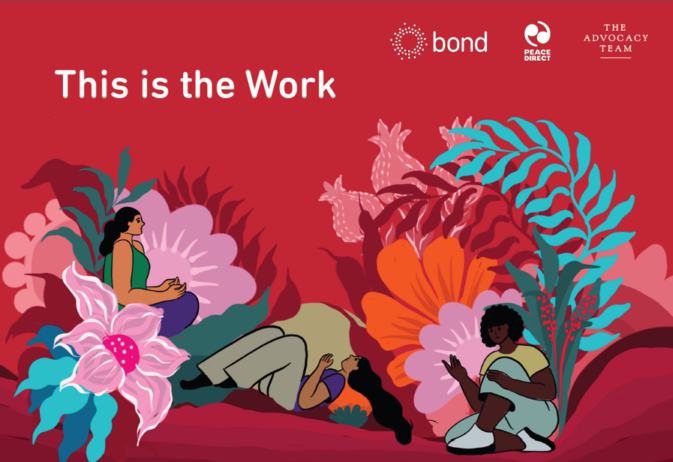Are we in danger of rolling backwards on global disability inclusion progress?
The journey for disability inclusion in the international development sector has gained much momentum in the last 15 years.
In 2018 the UK government demonstrated leadership on the issue, as joint hosts with Kenya of the very first Global Disability Summit (GDS), as well as the release by Department for International Development (DfID) of their first Disability Inclusion strategy.
Many of us working in the disability and development space, including the Bond Disability and Development Group (DDG), were keen to see the Foreign Commonwealth and Development Offices (FCDO) direction of travel following the launch in February 2022 of their new Disability Inclusion and Rights Strategy by Vicky Ford, minister for Africa, Caribbean and Latin America at this year’s second GDS.
The strategy, which is to last until 2030, is complemented by 18 Commitments as well as the overriding commitment to steer the Foreign, Commonwealth and Development Office (FCDO) to “meaningfully engage, empower and enable people with disabilities to exercise and enjoy their full rights and freedoms on an equal basis with others, without discrimination and across the life-course.”
What did we learn from the government’s new strategy?
Does the ambition match what is required on the ground?
The high ambition in the strategy is welcome and it is important to acknowledge the continued progress and leadership shown by the FCDO Disability Team.
However, there is concern within the sector that the disability inclusion space is shrinking in the UK government, with real potential that rather than going forward, movement will be static at best and is in serious danger of reversing the good progress made.
Why the concern on getting to where we need to be?
The strategy states that the foreign secretary aims to harness the “the full force of UK’s diplomatic and development expertise” alongside the FCDO’s wide global coverage to deliver real change for people with disabilities.
Subscribe to our newsletter
Our weekly email newsletter, Network News, is an indispensable weekly digest of the latest updates on funding, jobs, resources, news and learning opportunities in the international development sector.
Get Network NewsHowever, to get to where you want to go, you require a vehicle that is fit for purpose, with clarity on how you will get there and the means to do it. Currently on disability inclusion, both the delivery plan (the how) and funding for (the means) are, as of yet, unknown.
At the International Development Committee’s recent evidence session, Bond DDG members spoke of “project devastation”, and as a Bond Group we were dismayed that despite the UK government knowing that the recent Official Development Assistance (ODA) cuts would severely affect programmes related to people with disabilities, they still went ahead.
Aid spending cuts were mostly made in Africa and Asia, where people with disabilities are most likely to need greater assistance, and the cuts were made in the middle of the Covid pandemic, a time when support was even more acutely needed.
How can FCDO maintain momentum on disability inclusion?
The DDG in welcoming the Disability Inclusion and Rights strategy also list seven key factors in its response that the FCDO, and the development sector more broadly, should keep in mind, if we are to ensure progress by 2030:
1. Recognise support from Bond’s Disability and Development Group. In signalling its approval of the strategy, Bond DDG member organisations are also ready to continue to support the FCDO, to help realise and achieve the ambition that it so clearly sets out.
2. “Nothing about us without us” must be ensured. Meaningful engagement across the diversity of disability and keeping Organisations of People with Disabilities (OPDs) must be at the centre of how the FCDO develop and implement the strategy.
3. FCDO outcomes have to be more than just a slogan. For their “Rights, Voice, Choice and Visibility” commitment to have an effective impact, they need to be underpinned by targets that fully enable a rights-based approach to mainstreaming disability inclusion as well as providing specific disability focused support.
4. Increase the commitment to girls and women. To be seen as a leader on inclusion, there needs to be serious and qualitative investment across services and policies, in every sphere of FCDO’s engagement, that are truly gender-transformative and disability inclusive.
5. Address the barriers faced and needs of diverse groups. Broader equality policy commitments are required to ensure existing inequalities between groups are not exacerbated, alongside more clarity and depth in moving towards actively breaking down barriers.
6. Words must be translated into deliverable actions. This requires a delivery plan and funding that’s fit for purpose with specific aims for performance and timeframes that provide transparent qualitative accountability. Without these, the very people who are supposed to be supported and empowered by this ambitious strategy won’t know how and when success is hoped to be achieved.
7. Rebuilding trust. The negative impacts of the ODA cuts, as demonstrated by the Equalities Impact Assessment, on any efforts to achieve gender equality and inclusive development have been devastating. It requires rebuilding trust in the FCDO’s ability to follow through on their commitments, and this should be recognised and addressed in the upcoming International Development Strategy.
Read the Bond Disability and Development Group’s fuller DDG response to the FCDO strategy new Disability Inclusion and Rights Strategy here.
Category
News & ViewsThemes
Disability and Inclusion



